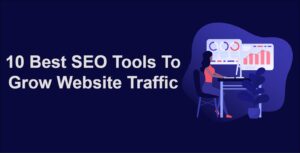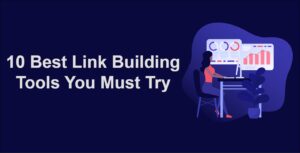In digital marketing, Pay-Per-Click (PPC) advertising has emerged as a powerful and effective way for businesses to promote their products and services online. But what exactly is PPC, and how does it work?
PPC advertising provides a fast and effective way to reach your target audience and drive conversions. By understanding the mechanics of PPC, conducting thorough research, and implementing best practices, businesses can create successful campaigns that yield tangible results.
PPC is not a set-it-and-forget-it strategy. Continuously monitor and optimize your campaigns to achieve optimal performance and maximize your return on investment. With the right approach, PPC advertising can be valuable for growing your online presence and driving business growth.
In this comprehensive guide, we’ll dive into the complexities of PPC advertising, exploring its definition, mechanics, benefits, and best practices.
Understanding Pay-Per-Click Advertising
Defining Pay-Per-Click (PPC) Advertising
Pay-Per-Click (PPC) advertising is a form of online advertising in which advertisers pay a fee each time their ad is clicked. Essentially, it’s a way of buying visits to your website rather than attempting to earn those visits organically. PPC ads can appear on search engines, social media platforms, and various websites.
The Mechanics of PPC Advertising
PPC ads are created through online advertising platforms like Google Ads and Microsoft Advertising (formerly known as Bing Ads). Advertisers bid on keywords relevant to their target audience. When a user enters a search query containing those keywords, the auction system determines which ads to display based on various factors, including bid amount and ad relevance.
How Does PPC Advertising Work?
Keyword Research and Selection
The foundation of a successful PPC campaign lies in thorough keyword research. Advertisers identify the keywords and phrases their potential customers are likely to use when searching for products or services.
Creating Compelling Ads
Once the keywords are identified, advertisers create engaging and relevant ads that capture users’ attention and entice them to click. Ad copy, ad extensions, and landing page experience all play crucial roles in driving conversions.
Setting Bid Amounts
Advertisers enter the auction by specifying how much they’re willing to pay for a click on their ad. Bid amounts are influenced by factors like keyword competition, industry, and the potential value of a conversion.
Ad Rank and Ad Placement
The auction system determines ad placement based on Ad Rank, which considers bid amount and ad quality. Ad quality is measured by factors like expected click-through rate, ad relevance, and landing page experience.
Paying Per Click
As the name suggests, advertisers only pay when a user clicks on their ad. If an ad is displayed but not clicked, the advertiser doesn’t incur any cost.
Benefits of PPC Advertising
Immediate Results
Unlike organic search strategies, PPC advertising delivers immediate visibility. As soon as your campaign is approved, your ads can appear on search engine results pages and relevant websites.
Highly Targeted Advertising
PPC allows advertisers to target specific demographics, locations, devices, and even the time of day. This level of granularity ensures that ads reach the right audience.
Cost Control
PPC campaigns provide control over spending by setting daily or campaign-level budgets. This ensures that you don’t exceed your advertising budget.
Measurable Results
PPC platforms offer detailed performance metrics, including impressions, clicks, conversions, and cost per conversion. This data helps advertisers measure ROI and make informed decisions.
Best Practices for Successful PPC Campaigns
Conduct Thorough Keyword Research
Effective keyword research involves identifying both broad and long-tail keywords that resonate with your target audience. Tools like Google Keyword Planner can help you discover relevant keywords.
Craft Compelling Ad Copy
Write concise, clear, and compelling ad copy that speaks directly to your target audience. Highlight unique selling points and include a strong call to action.
Optimize Landing Pages
Ensure that the landing page users are directed to is relevant, user-friendly, and designed to convert. A seamless transition from ad to landing page improves user experience and conversions.
Regularly Monitor and Adjust
PPC campaigns require ongoing monitoring and optimization. Analyze performance metrics regularly and make necessary adjustments to improve ad performance.
Is pay per click advertising worth it
| Pros of PPC Advertising | Cons of PPC Advertising |
|---|---|
| Immediate Results: Quick visibility and potential for instant traffic. | Costs Can Add Up: Bid competition and keyword demand can increase costs. |
| Targeted Audience: Precise targeting based on demographics, interests, and behavior. | Budget Considerations: Requires a budget, and expenses can vary. |
| Controlled Budget: You set daily or campaign spending limits. | Competition Impact: Highly competitive industries may lead to higher bids. |
| Measurable ROI: Detailed metrics to track clicks, conversions, and ROI. | Keyword Research: Effective keyword selection is essential for campaign success. |
| Brand Exposure: Increases brand awareness even if users don’t click. | Landing Page Quality: Landing pages must be well-designed for conversions. |
| Customization: Ability to test different ad variations and messaging. | Ongoing Optimization: Requires continuous monitoring and adjustments. |
| Quick Testing: Can rapidly test ad strategies and refine campaigns. | Potential Ad Blockers: Some users use ad blockers, reducing visibility. |
| Organic SEO Balance: PPC should complement, not replace, organic efforts. |
When PPC Advertising May Be Worth It:
- When you need immediate results or quick visibility.
- When you want to reach specific demographics or locations.
- When you have products or services with a high potential ROI.
- When testing messaging or offers for effectiveness.





